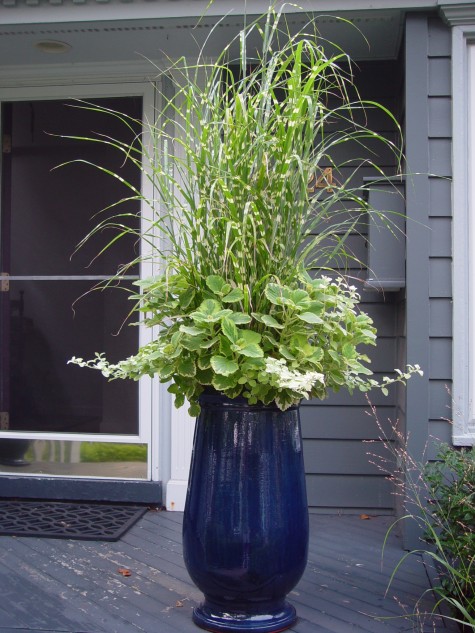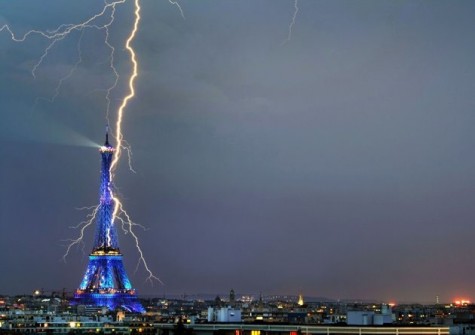
I had notice from my customs broker today that the first of our two containers from France is in customs. This is such great news. This July 2010 photograph by Bertrand Kulik of the Eiffel Tower during a storm perfectly describes my anticipatory excitement. French garden design, French garden pots-what is not to like? Rob’s trip to France was in mid September of last year-some 4 months ago. Why so long a wait for a pair of containers? The bulk of our purchases were terra cotta pots, made to order. We bought many pots from the Poterie de la Madeleine over the past 15 years. Rob had a long standing relationship with the owner Roland Zobel, and his assistant, Madame Pellier. After his untimely death in 2004, the poterie de la Madeleine changed hands.
Rob shopped this past September in new places. New to him, that is. When he buys glazed French terra cotta pots, he does not buy from existing stock. He special orders every pot to be custom made for us. He specifies styles, sizes, and glazes that appeal to him, and contribute to a coherent collection. It takes a lot of time for these small French poteries to fill a special order.
Glazed French garden pots are indescribably beautiful. There are those classic designs and classic colors dating back centuries. There are new glazes and shapes that are enchanting. The small artisanal poteries produce very fine quality pots. They are very well schooled in the history, and small enough to take chances. Of course we are interested in all of the above.
These pictures from his trip to France are astonishing. I have never seen terra cotta for the garden produced and displayed on this scale in the US. I suspect the mild Mediterranean climates have much to do with the large space that is devoted to garden pots. Gardening is a way of life in Europe. This casual display is telling. The pot yard has a dirt floor. A garden pot has a job-it holds the soil, that enables the plants to grow-all in a beautiful way.
Of course I want my garden pots to be beautiful-who doesn’t? If they are steeped in history, I love that simmering stew. Should they have beautiful proportions, sound and sturdy construction, and heft, I am interested. Should their beauty enchant my eye and heart, the planting of that pot is as close to a perfect moment as I can imagine. Rob dealt with every French poterie in that self effacing and attentive way that marks his relationships with all of our overseas suppliers. This means we have a container in customs that is all about his respect for their craftsmanship, and his passion for the garden. That intersection of fired earth, and his vision-inside that container.
He called me multiple times last September about a matte green glaze that caught his eye. I completely trust his judgment. If he loves a matte green glaze, then I do too. 16 years of buying garden pots in France means he knows how to feel the clay. What do I mean by this?
I cannot explain this so well in words. He introduces himself to the pot makers. He looks at the thickness of the clay. He tries on every glaze, every patine ancienne. He considers the history. He considers every new interpretation. He takes the time to make thoughtful decisions. He imagines a relationship between a pot and an agave, or a tomato, or a topiary. He edits. Making his thoughts come to life depends on the relationships he has nurtured for many years. He asks if special glazes are available. He devotes whatever it takes that might result in a garden pot of distinction.
Garden pots made in France-why would you want one? Why wouldn’t you? A beautiful pot makes the gardening all the more pleasurable. The shapes and glazes please the eye.
These are our pots, ready to load in the container.
We try to completely fill the container top to bottom. There is no sense in shipping air across the ocean. It is extremely difficult to estimate what will fill a container. That is why we have a second container due in Detroit over the weekend.
All of the poteries cooperated in delivering their pots to the poterie where we had our largest order. This picture was taken on January 5. Should the trip through customs go smoothly, we should have our pots in no time.


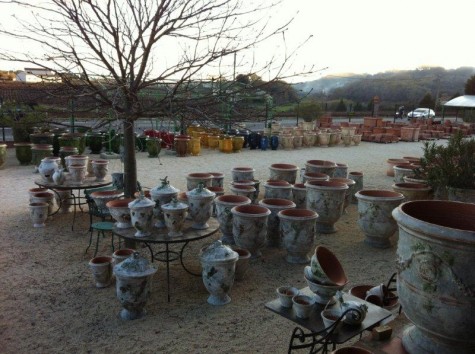
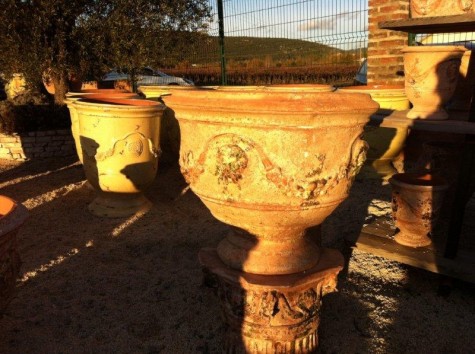
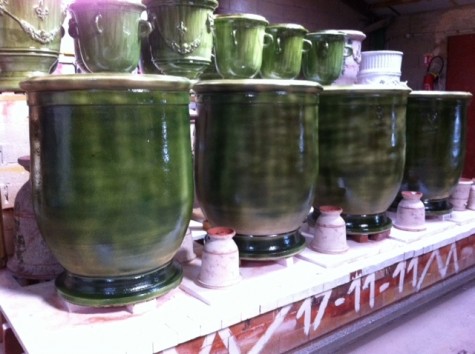
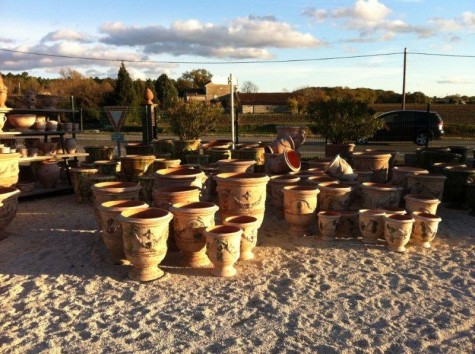

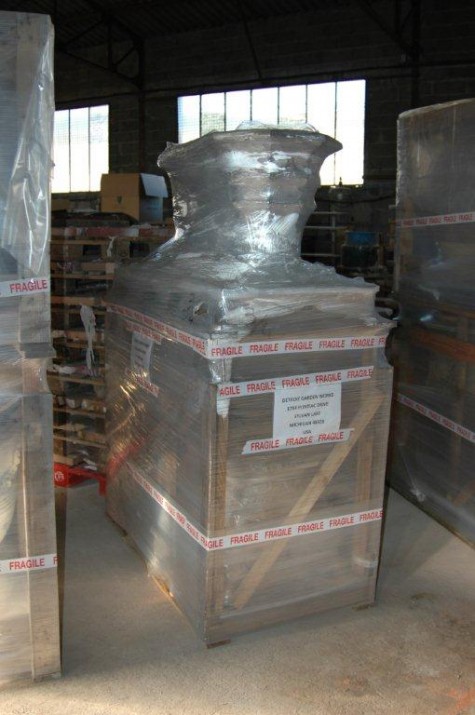

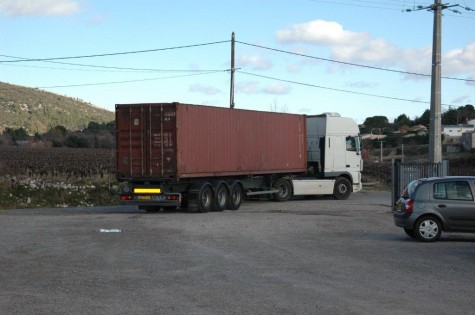
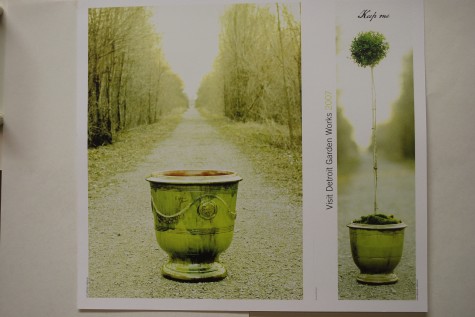
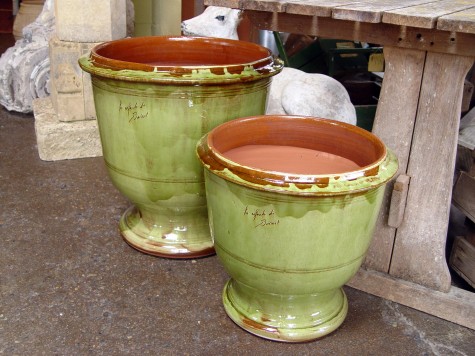 I have been importing garden pots handmade at a number of French potteries since 1992-I am as crazy about them today as I was 18 years ago. My very first purchase-a pallet of gorgeous cream colored clay pots from the Poterie Provencale in Biot. I am convinced a mutual love of beautiful objects for the garden overcame our language difficulties; I was so thrilled to get those pots. Les Enfant de Boisset does not produce an olive green pot. It was entirely Rob’s asking and their willingness to make a collection especially for us in this great color.
I have been importing garden pots handmade at a number of French potteries since 1992-I am as crazy about them today as I was 18 years ago. My very first purchase-a pallet of gorgeous cream colored clay pots from the Poterie Provencale in Biot. I am convinced a mutual love of beautiful objects for the garden overcame our language difficulties; I was so thrilled to get those pots. Les Enfant de Boisset does not produce an olive green pot. It was entirely Rob’s asking and their willingness to make a collection especially for us in this great color.  Planted up, these pots make for an entire landscape in a very small space. French garden pots are made today in much the same way, and with many of the same designs that have existed for centuries. They clearly show evidence of the human hand, and speak to their long history of landscape and garden. Some French poteries have added more modern designs, to round out their collections.
Planted up, these pots make for an entire landscape in a very small space. French garden pots are made today in much the same way, and with many of the same designs that have existed for centuries. They clearly show evidence of the human hand, and speak to their long history of landscape and garden. Some French poteries have added more modern designs, to round out their collections.  This yellow/brown glazed pot came from the Poterie De Cliousclat, a French pottery whose beginnings date back to the 16th century. Rob once brought me a small book detailing the history of the pots; the pages of the book had absorbed the smell of the clay from the dirt floors of the pottery. Though Cliousclat is no longer, I will never forget their pots, or the smell of the poterie inseparable from that book.
This yellow/brown glazed pot came from the Poterie De Cliousclat, a French pottery whose beginnings date back to the 16th century. Rob once brought me a small book detailing the history of the pots; the pages of the book had absorbed the smell of the clay from the dirt floors of the pottery. Though Cliousclat is no longer, I will never forget their pots, or the smell of the poterie inseparable from that book. 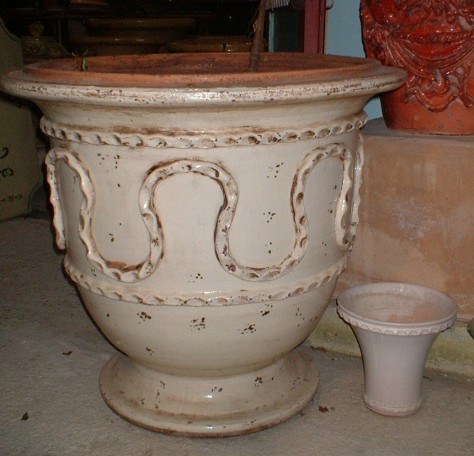
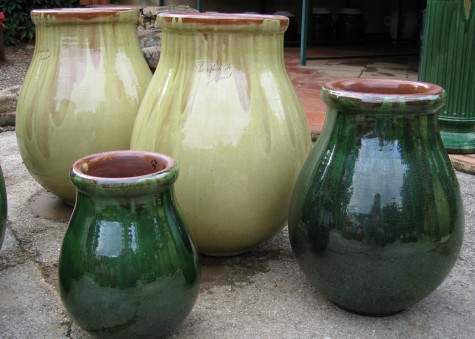

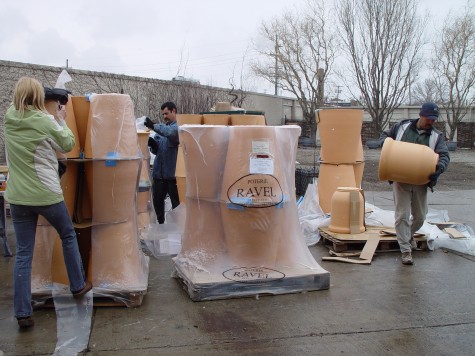 Arrival of a shipment of pots from the Poterie Ravel
Arrival of a shipment of pots from the Poterie Ravel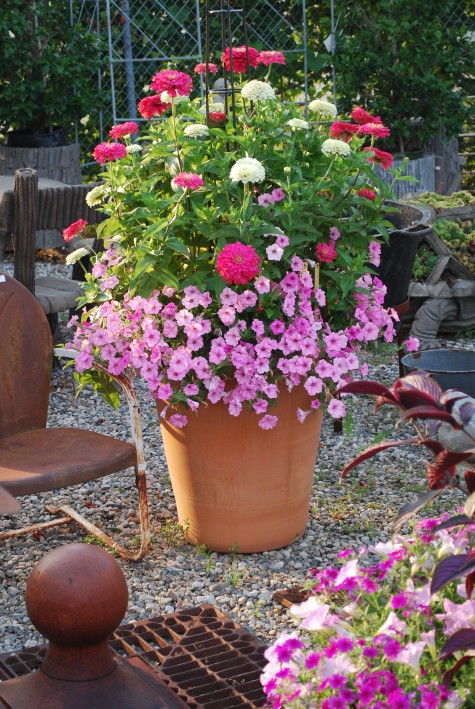 Large Ravel pot, planted
Large Ravel pot, planted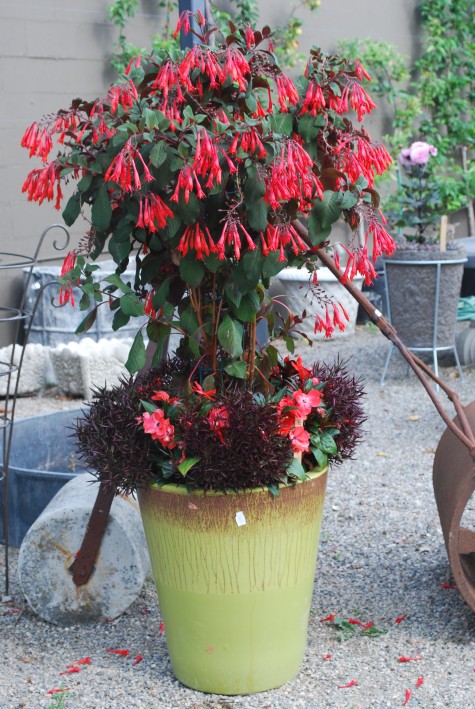

 Planted Violetta pots
Planted Violetta pots

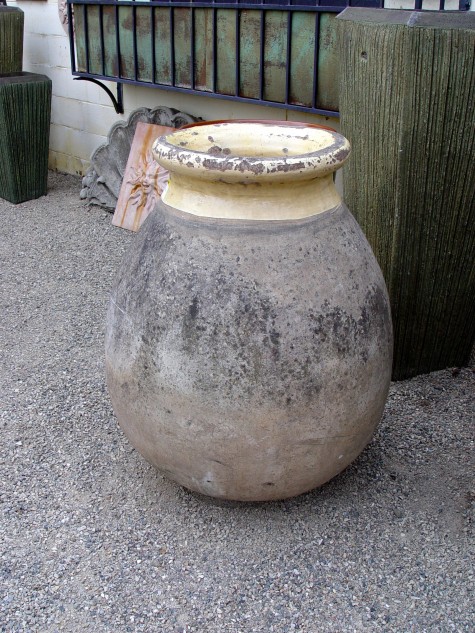
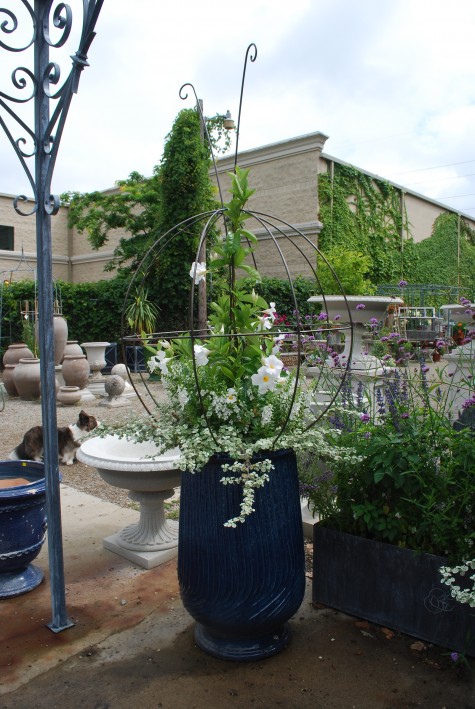 blue strie huile, from the Poterie de la Madeleine, in Anduze, planted
blue strie huile, from the Poterie de la Madeleine, in Anduze, planted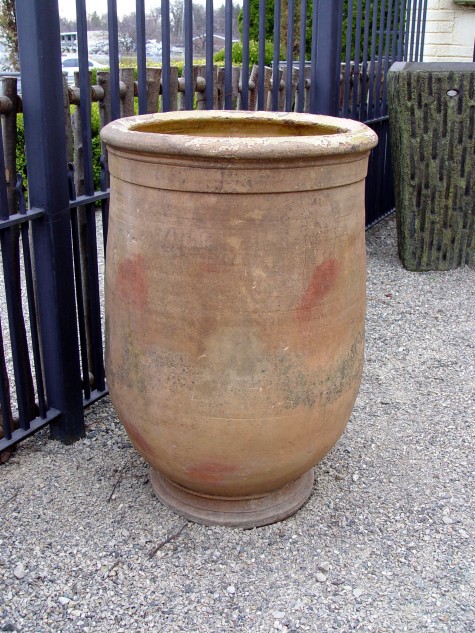 French huile, circa 1920
French huile, circa 1920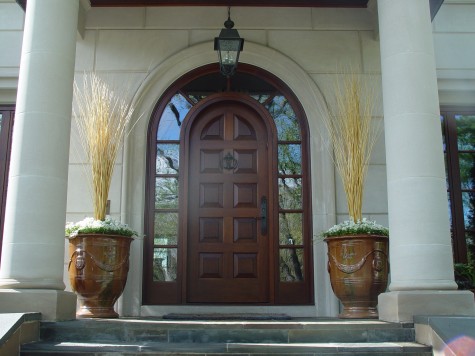 Classic Anduze pot, Poterie de la Madeleine, in the flamme finish
Classic Anduze pot, Poterie de la Madeleine, in the flamme finish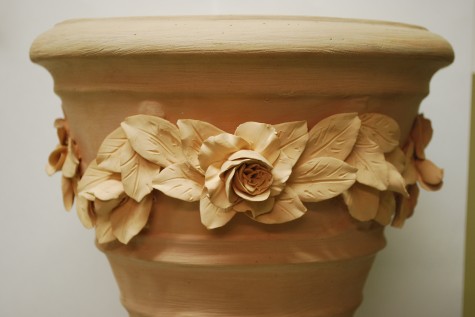
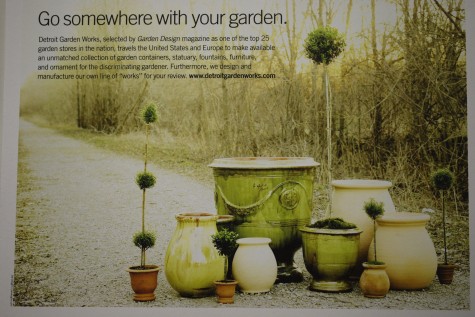
 I reluctantly agreed to play ball with those dogs of mine yesterday-in spite of the 9 degree temperature. We were not outside for long, but long enough for me to see the color of my yews had gone so dark they almost looked black. This cold color could not be further from how those yews look dressed in their spring green foliage. This set me to thinking about color as a design element. The glazed terra cotta pots manufactured in France for hundreds of years make a big color statement. Their strong color has a very Mediterranean feeling to me; the color seems very much a product of the climate in which they are made. When I see a pink stucco house, I immediately think warm climate; no doubt I react to color with an entire set of pre-conceived notions hovering nearby.
I reluctantly agreed to play ball with those dogs of mine yesterday-in spite of the 9 degree temperature. We were not outside for long, but long enough for me to see the color of my yews had gone so dark they almost looked black. This cold color could not be further from how those yews look dressed in their spring green foliage. This set me to thinking about color as a design element. The glazed terra cotta pots manufactured in France for hundreds of years make a big color statement. Their strong color has a very Mediterranean feeling to me; the color seems very much a product of the climate in which they are made. When I see a pink stucco house, I immediately think warm climate; no doubt I react to color with an entire set of pre-conceived notions hovering nearby.  Though green is the dominant color of any landscape, this shiny green glaze is a color experience of a different kind. These pots have a much more formal appearance than a natural clay pot-whose natural and from the earth color is vastly more subdued than this. As glazed pots do not absorb water from the outside, the finish and color is as fresh in their tenth year as their first, provided none of the glaze has chipped. The vibrant color of these pots will strongly figure in how I would place and plant them.
Though green is the dominant color of any landscape, this shiny green glaze is a color experience of a different kind. These pots have a much more formal appearance than a natural clay pot-whose natural and from the earth color is vastly more subdued than this. As glazed pots do not absorb water from the outside, the finish and color is as fresh in their tenth year as their first, provided none of the glaze has chipped. The vibrant color of these pots will strongly figure in how I would place and plant them. 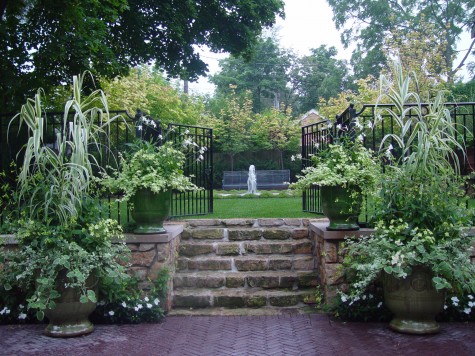 The color of these pots will always be a significant part of the planting composition. Unlike natural clay pots whose importance in the composition may be secondary or slight, the color of these pots attracts visual attention, and sets off the planting in a formal way. A green and white color scheme seems restrained and serene. Do these pots look out of their Mediterranean element? I think not. This leads me to think that before deciding a color won’t work, I should try it.
The color of these pots will always be a significant part of the planting composition. Unlike natural clay pots whose importance in the composition may be secondary or slight, the color of these pots attracts visual attention, and sets off the planting in a formal way. A green and white color scheme seems restrained and serene. Do these pots look out of their Mediterranean element? I think not. This leads me to think that before deciding a color won’t work, I should try it. This color scheme branches out a bit into the pinks and greys. The pot is elevated on a concrete base, so the foot of the pot still reads even though the ground planting has grown in. The shiny green mass of the pot is a beautiful foil for the tiny naturally green leaves of the boxwood. Monochromatic, or one color schemes are quietly formal and restful in their simplicity.
This color scheme branches out a bit into the pinks and greys. The pot is elevated on a concrete base, so the foot of the pot still reads even though the ground planting has grown in. The shiny green mass of the pot is a beautiful foil for the tiny naturally green leaves of the boxwood. Monochromatic, or one color schemes are quietly formal and restful in their simplicity.  This pot is 12 years old. Mineral deposits from the water had dulled the shine of the glaze. It is remarkable how close the color is to the color of the existing evergreens and grass. This composition is more about texture, and mass, than color.
This pot is 12 years old. Mineral deposits from the water had dulled the shine of the glaze. It is remarkable how close the color is to the color of the existing evergreens and grass. This composition is more about texture, and mass, than color.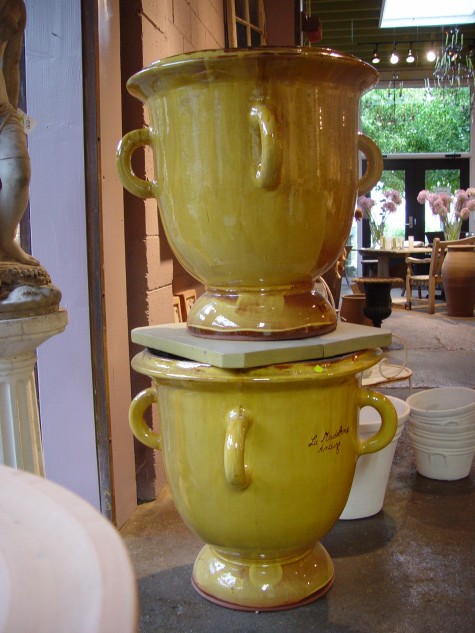 Yellow glazed French pots are perfect for places where any thing but neutral seems like a good idea. Shady gardens, or nondescript locations asking for a strong center of interest can get that from a splash of unexpected color.
Yellow glazed French pots are perfect for places where any thing but neutral seems like a good idea. Shady gardens, or nondescript locations asking for a strong center of interest can get that from a splash of unexpected color.  This pot is full of surprises; the yellow of the pot is just the beginning. A threadleaf Japanese maple makes an unusual centerpiece for the surrounding white begonias and lime licorice. The brick front porch, tough completely shaded by a second story balcony, has a fresh and striking appearance. Though delicate in color, these French pots are incredibly strong and durable. The clay of the large pots can be 3/8 of an inch thick or better, and they are high fired for extended periods of time.
This pot is full of surprises; the yellow of the pot is just the beginning. A threadleaf Japanese maple makes an unusual centerpiece for the surrounding white begonias and lime licorice. The brick front porch, tough completely shaded by a second story balcony, has a fresh and striking appearance. Though delicate in color, these French pots are incredibly strong and durable. The clay of the large pots can be 3/8 of an inch thick or better, and they are high fired for extended periods of time.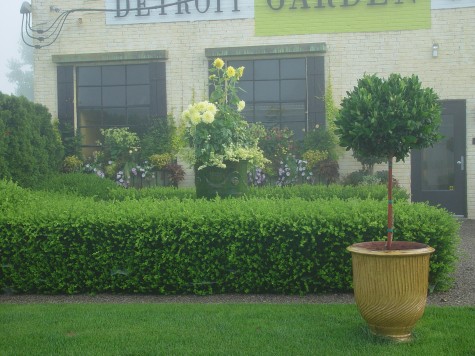 Some potteries have added more contemporary designs to their collections. This pot, known as a strie, refers to the striations formed from the pattern generated by the fingers of the potter; each pot is unique to the fingertips of the person who made it. The color of the pot helps to make it central to the entire composition of the garden. Simple color relationships read more clearly and strongly than mixed color compositions. Strong color relationships paired with more subtle color relationships is what creates rhythm in a composition.
Some potteries have added more contemporary designs to their collections. This pot, known as a strie, refers to the striations formed from the pattern generated by the fingers of the potter; each pot is unique to the fingertips of the person who made it. The color of the pot helps to make it central to the entire composition of the garden. Simple color relationships read more clearly and strongly than mixed color compositions. Strong color relationships paired with more subtle color relationships is what creates rhythm in a composition.  Blue glazed pots in the landscape can be tough to place. Though bluestone, acid washed steel, lead, water and sky all represent blue in one form or another, planting blue pots requires some thought. That glazed blue will be very influential in the look of the whole. Yellow flowers in a blue pot can look like a band uniform, or worse. Some shades of purple are deadly dull and irritating with this shade of blue; lavender and silver can be great.
Blue glazed pots in the landscape can be tough to place. Though bluestone, acid washed steel, lead, water and sky all represent blue in one form or another, planting blue pots requires some thought. That glazed blue will be very influential in the look of the whole. Yellow flowers in a blue pot can look like a band uniform, or worse. Some shades of purple are deadly dull and irritating with this shade of blue; lavender and silver can be great. 